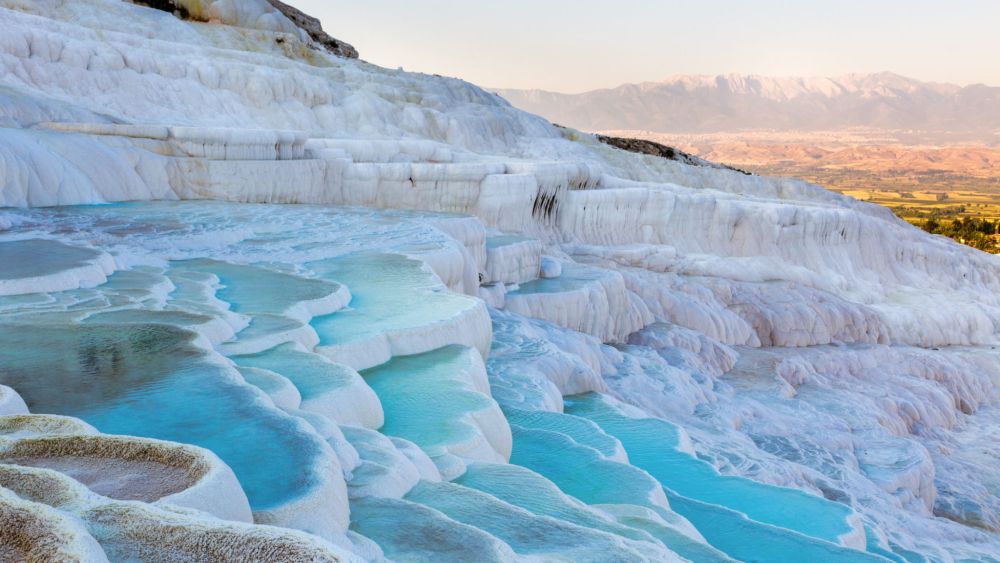

Tucked away in the picturesque landscape of Turkey's inner Aegean region, in the River Menderes valley, lies the stunning natural wonder known as Pamukkale. This UNESCO World Heritage site, famed for its ethereal white travertine terraces and warm, mineral-rich waters, has been a magnet for tourists since ancient times.
Pamukkale, which literally translates to "Cotton Castle" in Turkish, has attracted visitors for over two millennia. Its history as a spa destination dates back to the 2nd century BC when the ancient city of Hierapolis was founded on top of the white "castle". The Greco-Roman city became a healing centre where people would bathe in the warm terraces, seeking relief from various ailments. They believed the waters of Pamukkale had medicinal properties due to the high mineral content.
The ruins of Hierapolis, together with the hot springs of Pamukkale, give visitors a unique glimpse into the ancient world, as they can explore historic ruins and then bathe in the same therapeutic waters that have been used for thousands of years.
In modern times, Pamukkale has experienced fluctuating peaks of tourism. The site saw a surge in popularity in the 20th century, but with this rise came the challenge of preserving the delicate travertine structures and maintaining the thermal pools' integrity. However, restoration efforts and sustainable tourism practices were installed, limiting access to certain areas to ensure that Pamukkale can be enjoyed by future generations.
Today, the trend in tourism at Pamukkale aligns with globally conscious travel. Visitors are encouraged to enjoy the site responsibly, with limited numbers allowed in the pools at any given time to prevent erosion and damage to the terraces. The focus is now on eco-friendly tourism, which conserves the environment, respects local culture, and provides benefits to the local community.
Tourists can still enjoy bathing in the terraces but are often required to do so without shoes to protect the deposits. Additionally, new activities such as hot air balloon rides offer breathtaking views of the pools from above, providing a fresh perspective of this ancient and natural attraction.
Furthermore, the development of boutique hotels and locally-run guesthouses offers visitors a chance to immerse themselves in the local culture while ensuring that the benefits of tourism are felt within the community. Combined with the region's other historical attractions, such as ancient ruins and the ancient city of Ephesus, Pamukkale continues to be a sought-after Turkish destination that provides an enriching and sustainable travel experience.
Ultimately, Pamukkale remains a testament to nature's artistry and humanity's enduring adoration of its healing waters, anchoring it as an eternal jewel in Turkey's tourism crown.